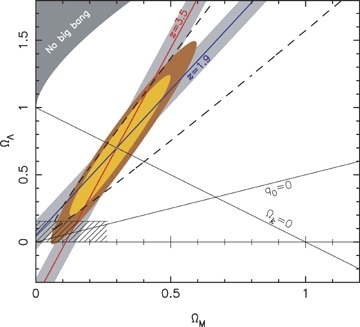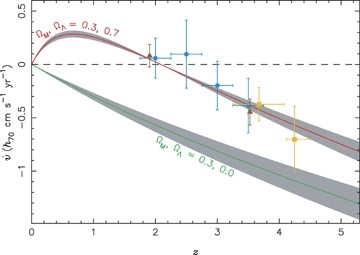CODEX Show Case 1
The complete science document (as it was prepared for Phase A , Feb. 2010) is available here in pdf format.
-
A direct measurement of the accelerating expansion of the Universe: detecting and measuring the cosmological redshift drift of the Lyman-alpha forest.
The discovery that the expansion of the Universe appears to be accelerating has sparked intense interest in the observational exploration of the expansion history of the Universe. The most direct way of measuring the past expansion rate is to use an effect first discussed by Sandage (1962, ApJ, 136, 319). He showed that the evolution of the Hubble expansion causes the redshifts of cosmologically distant objects partaking in the Hubble flow to change slowly with time. Just as the redshift is in itself evidence of an expanding Universe, so is the change in redshift with time evidence its de- or acceleration.
This redshift drift is a very small effect but CODEX will be the first instrument capable of detecting it. The most favourable target for this experiment is the multitude of absorption features making up the Lyman-alpha forest in QSO absorption spectra (Loeb 1998, ApJ, 499, L111).
For more information, please read this Messenger article (pdf format).
Figure 1.
Monte-Carlo simulations of three different implementations of a redshift drift experiment. Plotted are values and errors of the "measured" velocity drift (vertical axis), expected for a total experiment duration of 20 yr, a total integration time of 4000 h and for standard cosmological parameters h70 = 1, OmegaM = 0.3, and Omegalambda = 0.7. The solid lines show the expected redshift drift for diffeent parameters as indicated, and h70 = 1. The grey shaded areas result from varying H0 by ±8 km/Mpc. See Liske et al. ("Cosmic dynamics in the era of Extremely Large Telescopes", 2008, MNRAS, 386, 1193) from which this figure is taken for more details.
Figure 2.

